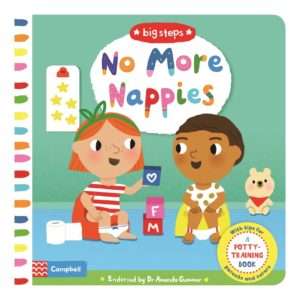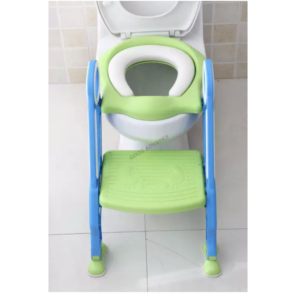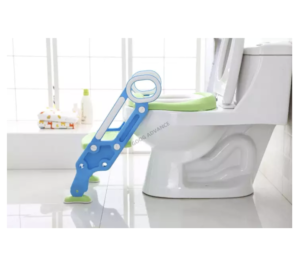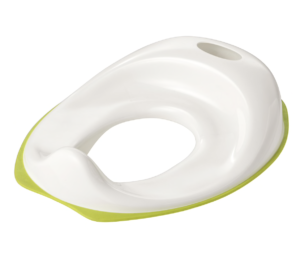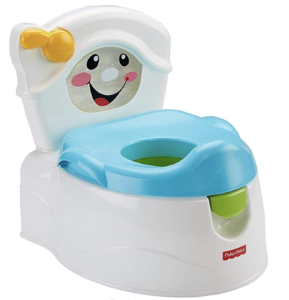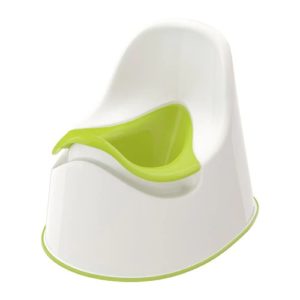Potty Training For A Two Year Old Toddler Boy: How and Why It Took Three Weeks, Not Three Days
I watched endless YouTube videos and read blog posts on how to potty train successfully. And, of course, saw many people claim that potty training can be done in 3-4 days (much like what I have read about sleep training). Again, I just felt like the potty training process isn’t that simple (or quick) and I’ll talk about why below. I also want to preface this post by saying I am simply sharing my experience and lessons learned; I am not claiming that I am right and others are wrong.
Ok, let’s get to it!
Table of Contents
Potty training is tricky
The thing with potty / toilet training is that it varies for each child so much.
Do they understand the functions of pooping and peeing and the words associated with it? How familiar are they with the toilet? Do they understand what it’s for? How do they feel about using it? Have they ever seen you — the parent — using it?
These are some of the questions I asked myself after my son turned 2 years old and also when I started thinking about potty training (he’s currently 2 years and 8 months). I didn’t even know where to begin: how do I get a child who has no idea when he’s eliminating (aka pooping / peeing) in his diaper to tell me explicitly I need to go to the bathroom? I felt like there are so many smaller steps in between we had to cover before we even hit the official “training” phase.
Smaller steps before the “training” actually begins
I found these to be the smaller key steps to help my son with potty training in a positive and constructive way:
Understanding what the toilet is for and using accurate words: I started building first associations with the toilet by making my son sit on the toilet to clean him using the bum gun (jet spray) each time after he pooped in his diaper. While cleaning him, I talked to him about how “poop and pee needs to go in the potty and then we clean ourselves etc”. At this point I had no expectation of him eliminating in the toilet — we just cleaned and put the diaper back on so he could get used to the idea of at least going to the bathroom, sitting on the toilet and being comfortable with the whole concept.
Seeing others using the toilet: Every parent knows there’s no privacy when it comes to using the bathroom with young toddlers and kids in the house. So it’s pretty normal for my son to barge into the bathroom often and see what’s going on. My son also sees his friends at school sit on the toilet regularly and he does it too, even if nothing happens.
Not being afraid to sit on and use the toilet: I think this is one of the most important smaller steps I had to overcome with my son before I even started training. By taking it (very!) slowly and introducing the concept of the toilet to him in simple, smaller steps, I think I was able to ensure he wasn’t afraid of the toilet. To help aid this, I had a few tools to help:
- Story books about potty training: I started reading these two books to him regularly at night before bed to help with his understanding of how he will eventually use the toilet and wear “big boy pants”.
- Toilet training seat / step ladder: I bought the toilet step ladder and seat pictured below for my son and told him it’s a “special potty seat” just for him. And I encouraged him to step up and sit on the toilet by himself any time I was cleaning him to help build confidence, positive association and ownership of going to the toilet. I also use this IKEA Tossig toilet seat sometimes.
There are different ways to potty train — choosing the method that is right for me
From my research and reading, I feel like there are two main routes to potty training and both methods have their merits and drawbacks.
Using a portable potty training chair / seat: I understand this is a popular choice because it helps expedite all the smaller steps — understanding what a potty is, building positive associations, eliminating fear and encouraging ownership of going to the bathroom — that I mentioned above. Many portable potty training chairs / seats are designed with features such as being brightly coloured, built-in flushing mechanisms, songs and sounds, portability etc to help kids get excited and feel positive about using the bathroom. There are also simpler ones as shown below.
Pros:
- Potty training can arguably be done more quickly as kids may understand the concept of using the potty quicker
- It’s more fun with all the features for the kids
- Eliminates the spread of mess and accidents across the house
Cons:
- Risk of potty chair being seen as a new toy
- Some children when they start eliminating in the potty training chair become reluctant to do it in a regular toilet later because they are scared / don’t know it’s the same thing so the portable potty training chair has to go everywhere with the kid until he/she is ready for the regular toilet.
Using the regular toilet: The other way is to train straight on the regular toilet using a toilet seat. I understand this is sometimes seen as harder and can be more intimidating for kids, especially if they are suddenly exposed to it without much preparation.
Pros
- Children eventually understand that all toilets are for elimination and it’s easier when a child is out and about to make the association of where use to the bathroom
- Easier clean up
Cons
- Training can take longer for various reasons
- Some children are intimidated / scared of regular toilets
- Accidents can’t be contained as easily
Right from the start I made a conscious decision to train using the regular toilet route for the simple reason that I didn’t want to do the “extra” training when my son transitions from a portable potty training chair to a regular toilet. I also don’t want to tote around a portable potty chair if we are out and my son needs to go to the bathroom and refuses to do it in a regular toilet for any reason; I want him to be comfortable using a regular toilet wherever we are to keep things simple (and to keep my sanity).
It’s finally time to potty train!
Here’s how it went for me:
Week 1: I really had no idea how long i.e. days or week it would take for my son to understand the whole process. So I just started off with a few simple steps mentioned below and decided to see how the week progressed with minimal expectations.
- Eliminate diapers during the day time completely and wear underwear / training pants so if my son had an accident he will feel it immediately and slowly understand that he’s supposed to release in the toilet, and not on himself (I used the word “accident” to describe this). For the first week, I still let him wear diapers at nap time but then removed the nap time diapers in week 2 (I’ll explain more below).
- Figure out his pee and poop elimination schedule. Since he’s older (2 years and 8 months), I noticed after the first day he can hold his pee for about 1.5 – 2 hours and so I followed that schedule and asked him every 1.5-2 hours “Do you need to go to the potty to pee or poop?”. Of course, the first few days I didn’t get much of a response verbally but I would take him anyways at those intervals and sit him on the potty and talk about doing “pee and poop in the potty”. We waited about 10-15 minutes and if nothing happened, no worries. Leave the toilet and try again 30-45 minutes later.
- Make going to the toilet fun. I kept his potty training story books in the bathroom and each time my son sat on the toilet, I read the stories repeatedly to him and discussed what the characters are doing i.e. having accidents and that’s okay but trying again for the potty next time. I noticed my son identified with one of the characters in the books and so I started saying things like “Oh, you don’t want to have an accident like Moe. So next time we’ll try to go to the potty and then you can wear big boy pants. etc” and he really responded to this. We also sang songs, chatted about random things, played with some toys and kept it a light, non-stressful experience.
- Set up a reward system and celebrate successful eliminations. I put up a simple sheet of paper near the bathroom and each time my son has a successful elimination in the toilet he sticks a sticker on the board as a reward (and it really works!).
- Do not freak out or get upset or reprimand if an accident happens. If there was anything I was the most focused on, it was maintaining my cool during any and all accidents. And ensuring I didn’t raise my voice or show even a hint of negativity when an accident happened. I simply said “Oh, you had an accident. No problem, we’ll clean it up and next time tell me when you need to go and we can try to run to the potty faster so we don’t have an accident”.
- Watch like a hawk, all day, every day and ask “do you need to go to the potty?” at every chance. This seems a bit dramatic but I cannot stress enough how closely I watched my son. Since we are in quarantine I am home with my son all the time so I (or someone else) watched him like a hawk at all times to catch any moments he might communicate or show he needed to go to the bathroom, especially while watching tv or playing when it was more likely he may have an accident. It is exhausting and painstaking but I firmly believe it’s what it takes. Each time my son flinched or made a funny face or did the infamous “pee shimmy” I asked incessantly “Do you need to go to the potty? Tell me, okay. We’ll go together.” I asked and asked and asked and we went to the bathroom as many times as he was willing to go.
So during the first five days of potty training I went to the bathroom every 90 minutes or so with my son (and sat there with him for 10-15 mins each time with lots of stories, songs, chatter etc) because he wasn’t really aware when he needed to pee and he needed to recognise the feeling / pressure and to also then communicate with me whenever he felt it. I will fully admit that for the first four days there was not a single successful elimination in the toilet. Instead, there was a lot of just sitting around and nothing coming out or my son will be playing and running around and having an accident. And it can feel hopeless but I just kept reminding myself that my son is trying just as hard as I am at this so I have to be patient, no matter what. I kept the storybooks about potty training near the bathroom and every single time my son was on the potty waiting for something to happen, I read him the story and talked about what the characters were doing i.e. wearing underwear / being diaper-free, having accidents, going to the potty successfully etc.
We also discussed the concept of “a funny feeling” in his tummy when you need to poop or pee. I talked about how pee comes out of the penis and poop comes out of the bum. This might be TMI but it goes back to my point about being sure to use accurate language and words because I believe when my son matures this is what he will hear in the real world, instantly recognise it and be able to act accordingly.
Finally, on the fifth day he was successfully able to poop into the toilet (though I think it was a fluke) but it helped him understand the concept of eliminating in the toilet. On the sixth day we had a successful pee after waiting almost 20 minutes for it to happen. And we celebrated with stickers and cheers and clapping. I think my son started to understand what this whole thing is about.
Week 2: With a better grasp on my son’s elimination schedule / timings, I continued with everything I set up in week 1 and made two other changes:
- Remove the diaper during nap time: I think removing the nap time diaper as early as possible really helped my son to understand clearly what an “accident” is and feels like — not good, obviously. And also make the connection that he needs to eliminate in the toilet to avoid this wet and nasty feeling that is making him upset.
- Watch like a hawk but ask less and wait less: After a week of drilling my son non-stop, I decided to relax a little bit and see if my son would communicate with me when he needed to go to the bathroom. And if he did, we went and waited for no longer than 10 minutes. If nothing happened, no problem. Leave and try again later. I only really asked at 1.5-2 hour intervals, after meal times and before nap / bed time when I assumed he might need to go.
During week 2 my son had a few accidents every day after waking up from his nap but by the fourth day he was able to wake up and hold it in for long enough. And during the day time he was now leading the way to the toilet and excitedly talking about using it and recognising “funny feelings in his tummy” and telling me that “pee/poop is coming” while we waited (sometimes it would take up to 20-30 minutes and I waited if my son was happy to wait too). So there was a huge shift in his understanding and sense of ownership over the whole process. Day by day I saw that he was having more and more successful eliminations in the toilet and less accidents overall.
Week 3: Where it all starts coming together — and there are lots of stickers to show for it!
It’s like a switch went off in my son’s head: he finally got it! In Week 3 I made no further changes. In fact, I relaxed even more to give my son full autonomy to tell me when he needed to go to the toilet. I only asked if the gap between eliminations got too long or it was a time he should go to the bathroom like after meals or before a nap. My son quickly understood why going to the bathroom before naptime and bedtime makes sense…because nobody likes accidents! And now when he says he needs to go to the toilet, he really needs to go so there’s almost no waiting anymore. He does his business within a minute or two. We are sticking with the sticker rewards for as long as my son wants — it’s a huge motivating factor and seems to work wonders.
So that’s been my experience so far with potty training. It’s taken three full weeks — not three days — and it’s still not completely over because I have to still train for when we are out of the house, travel and road trips, and nighttime diapers. But all in good time…Rome wasn’t built in a day 😉
Potty training — in my opinion — is not fun, not easy and not quick; it’s a long and painstaking process, which requires consistency, patience, and a hawk-like presence. I felt like no one had really talked in real depth or detail about what the whole process looks like. So in this post I’m sharing with you what I wish someone would have told me before I started the whole process just so I felt a bit more guided and prepared.
Hope you find it helpful and insightful!

